Akropolis Decentralized was formed with a goal of creating a distributed savings and pension fund, but it has grown into so much more than that. It began with the AkropolisOS framework, which is for creators to make financial protocols, dApps, and DAOs.
The complete toolkit allows for the creation of smart contract driven decentralized finance products. Using AkropolisOS, developers are able to create platforms that allow users to invest, lend, save, and earn from their staked cryptocurrencies. It has even delivered a way to create under-collateralized loans, which is a unique spin on DeFi.
It works through the creation and control of capital pools that remain under DAO governance. The capital pools can be configured to deliver any financial results.
This includes lending pools, savings pools, insurance pools, pension fund pools, group investing pools, and any other financial pool you can imagine. The members of the pool DAO receive compensation for providing liquidity to the pool, for staking to provide loans, and for voting.

DAO capital pools for many uses. Image via Akropolis.io
The overriding goal of the project has been to replace many of the traditional banking and insurance products with decentralized versions that use the “mutual or co-op” model. The founders believe this creates a banking system that’s more fair and it also removes the predatory middlemen who serve no real purpose in the system.
The Akropolis mainnet was launched in June 2020 and has made major strides since. In fact, as of February 2021 the project is in a major state of change following a “merger” with Yearn Finance.
This review will explain some of the existing products, which in many cases are becoming open-sourced and handed off to the community, and will then go on to explain the rationale behind the ongoing changes and the future of Akropolis.
AkropolisOS Technical Development
Like so many DeFi protocols Akropolis was initially implemented on the Ethereum blockchain. However, it is able to be implemented on any blockchain with a Turing-complete virtual machine.
The AkropolisOS is the cornerstone of the project, built as a modular framework using OpenZepplin SDK and rooted in Façade software design. AkropolisOS was created to allow developers to set up and manage a DAO quickly, while also allowing for a diverse range of customizable features.
Akropolis has also built on Substrate, which led to the Polkahub and Polkahub Bridge solutions that integrates Akropolis with the Polkadot ecosystem.

Just a few of the potential dApps that can be build on Akropolis. Image via Akropolis.io
In the Akropolis protocol are several layers, with each responsible for the following separate functions:
- Identity Management module (IM)
- Accounting module
- AFO maintenance and Governance Module
- Network Governance module
- Payment processing Module (C2FC Framework)
These features were included so that Akropolis can facilitate development of Autonomous Finance Organizations (AFOs). These are public or private entities that interact with internal and external capital providers (via pooling) and other stakeholders.
The first products built using AkropolisOS were the Sparta and Delphi products. These allow users to yield farm DeFi tokens, and the engage in the loan and savings process. These networks use the AKRO token for staking and governance, and the Delphi product also uses an ABEL token. The AKRO token is primarily used to build network trust and enable network governance via block validation, collateral lock ups, and vote participation.
Two Capital Pools: Sparta and Delphi
The first two products added to the Akropolis ecosystem were the Sparta and Delphi capital pools.
Sparta is a savings pool that also allows undercollaterlized loans. It provides a native yield and interest rate income mechanism for its members. Anyone is able to contribute capital to the pool and can then earn based on the bonding curve and changes in relation to the pool liquidity amounts. A user is also able to access an undercollateralized loan by providing 50% of the loan-to-value. It is also possible to become a lender by staking funds in the pool.
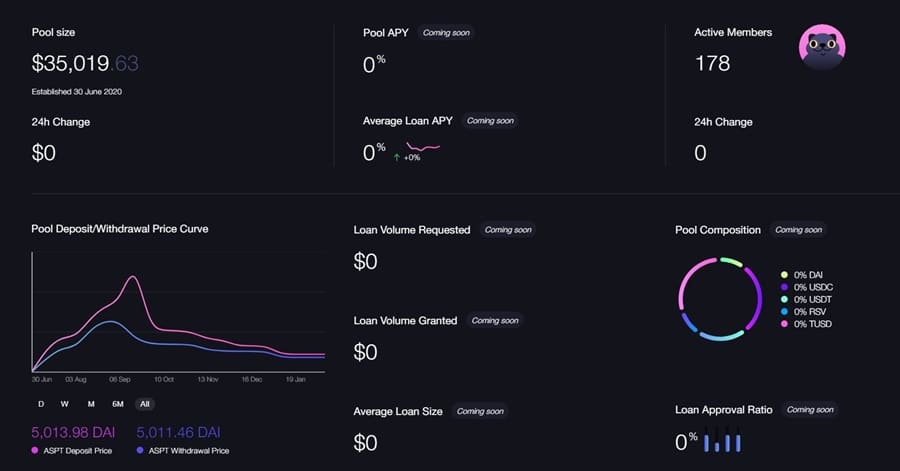
The Sparta pool allows for undercollateralized loans, which is unique in DeFi. Image via Sparta
Delphi was created for yield farming and automated passive investing. It allows users to yield farm DeFi tokens or to dollar cost into Bitcoin and Ethereum. Delphi users can also earn rewards based on the savings and liquidity provision with AKRO governance token rewards.
Undercollateralized Loans via Staking
One of the more unique features of Akropolis (in Sparta) is the ability to access undercollateralized loans. This is far different from most DeFi projects, which have focused on heavily overcapitalized loans.
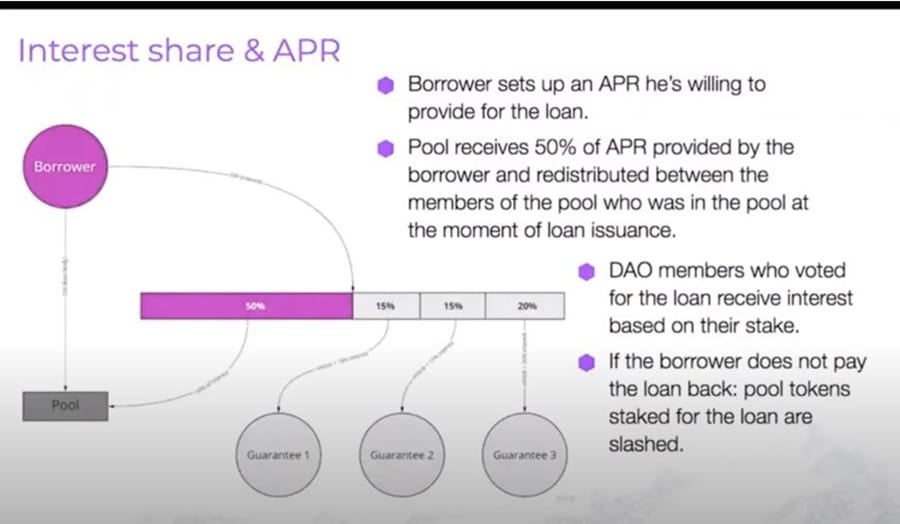
Akropolis is unique in allowing for undercollateralized loans. Image via Akropolis blog.
A Sparta pool member is able to request an undercollateralized loan by providing 50% of the collateral for that loan. The other 50% must then be staked by other DAO members.
There are a number of methods used to judge the risk associated with the borrower which includes 3rd party credit scores, identity metrics, and on-chain social reputation. Staking on a loan application creates a credit scoring system, used to evaluate the loan’s risk.
Pensify – On-Chain Pension Fund
Pensify is a pension dApp that was created as part of the HackMoney hackathon from ETHGlobal in May 2020. Like other DeFi dApps it allows users to farm yield using DAI. It also offers flash loan arbitrage, yield rebalancing, and it increases the value of its tokens with the bonding curve.
Users choose a pension plan when they join and when they retire they are able to withdraw the pension funds based on the rules of the plan chosen.
Cashflow Relay
The primary purpose of the CashflowRelay project is to capture the value of future cashflows expected by or due to businesses and individuals in the form of a flexible programmable digital asset natively integrated into the Web3 and DeFi ecosystems.
Cashflow Relay captures economic value in a novel way by allowing a user to tokenize/digitize, assign, transfer, group/ungroup and, of course, trade future cashflow obligations due at any Ethereum wallet address within a defined timeframe.

Cashflow Relay is the new way to do cashflow financing loans. Image via Medium.
Cashflow Relay addresses a range of use cases:
- an already operating company with existing cashflow issuing the C2FCs for several future periods and sell it at a discount, exchanging future income for “money today”;
- a liquidity provider returns the capital and receives the profit in case of correct risk assessment from the future cashflows of the company.
C2FC token works as digital right, automatically forwarding a specific proportion cashflows to the token holder.
This is a DeFi equivalent of cashflow financing, with a chief goal of helping companies get investments without having to jump through the myriad hoops that exist with traditional centralized platforms. Projects can get funds directly from investors, accelerate their growth and pay it back as they grow.
The Akropolis Team
Ana Andrianova – Ana is the CEO of Akropolis and a co-founder of the project. She is a University of Oxford graduate and brings a strong background in asset management to the project.
She has worked for a number of investment/fund management firms including Lehman Brothers before co-founding her own funds – Byhiras and Apiro Capital. In the past she held the position of Advisor to the Web3 Foundation, and was previously an Advisory Board Member for OpenMaker.eu which is an EU funded industrial incubator.
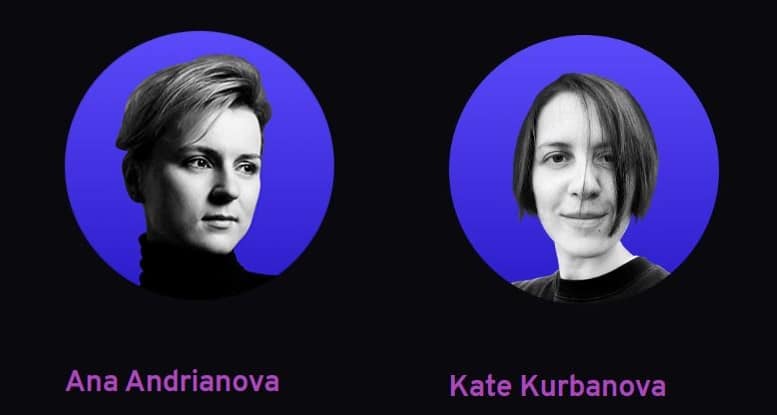
A pair of talented, ambitious founders. Image via Akropolis Wiki.
Kate Kurbanova – Kate is the Operations Head of Akropolis and the other co-founder of the project. She also has a strong financial background and has been working in the blockchain sector for a number of years. She was an Advisor to the blockchain micro-tasking platform Latium, and later moved to the role of Head of Analytics for Cindicator. Kate specializes in developing research tools and methodologies, and tailoring products and services for crypto specific use cases.
The entire Akropolis team is fairly small, and features a good deal of tech talent. The team includes CTO and Lead Developer Alexander Mazaletskiy who received a PhD in Automation and Machine Learning and has been involved in the blockchain space since 2010.
Pavel Rubin is in the project as a Solidity Developer and there are three team members working in the areas of Software Design and UI/UX. With the recent merger with Yearn Finance however the size of the team could change dramatically depending on how resources between the two projects are shared around.
Akropolis Hack & Response
As hacking attempts on DeFi projects become more common, 2020 saw roughly $200 million worth of hacks, Akropolis has not been immune. In November 2020 they suffered a hack that resulted in the loss of just over $2 million worth of DAI. The loss was the result of a re-entrancy attack on the Delphi pool utilizing a flash loan.

DeFi projects have become increasingly popular targets for hackers. Image via Cryptoknowmics.com
A re-entrancy attack allows the attacker to withdraw more funds than a smart contract actually holds. The most famous re-entrancy attack was the 2016 attack on the Ethereum DAO.
Hack Compensation
The Akropolis team took the hack and the loss of user funds very seriously. In that regard they have stated it is important to see the users fairly compensated for any losses. In order to compensate those users Akropolis has donated 50% of the hacked tokens in vested AKRO tokens, while the remaining 50% will be provided from future product fees.
- Compensation: 50% of compensation in a form of vAKRO;
- Rate: $0.012 per AKRO (price is fixed at the level just before the hack);
- Vesting:24 months (2 years), linear.
Akropolis Merger with yEarn
Yearn Finance is being looked as as the Amazon of decentralized finance as it snaps up project after project and rolls them into the yEarn family. So far that’s included SushiSwap, Cream, Pickle Finance, Bounce, Cover Protocol, and in November 2020 yEarn added Akropolis to that list.
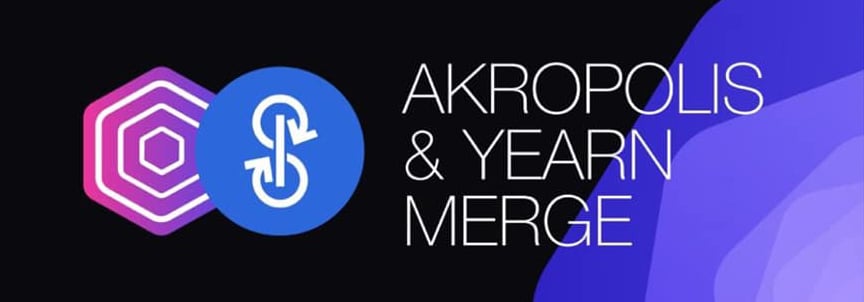
Akropolis becomes another in a long list of yEarn mergers. Image via Akropolis blog.
Based on the agreement between the two projects this is more a collaboration than a merger, with Akropolis becoming the exclusive provider for Yearn Vault’s lending solutions. According to the announcement from Akropolis:
The contributors at Yearn and Akropolis join forces to capitalize on each other’s strengths and to enable each team to specialize further and focus on what they do best. Yearn will continue to develop best-in-class Vault and Lending protocol solutions. Akropolis becomes the exclusive front-of-house institutional service provider of these, offering bespoke access to their network of clients, with investment strategies tailored specifically to them.
The collaboration between the two moves Akropolis into a new version which will focus more on bringing institutional traders into the DeFi space. The two also plan on creating new platforms and pools that will be improved alternatives for high-yield accounts and savings pools.
The Yearn v2 vaults have merged with the Akropolis vaults, and soon it will be possible to earn PICKLE through the new Pickle gauge models. There is also a new app planned that will combine the merged Akropolis and Yearn vaults to integrate with Cream v2.
Akropolis’ Changes
There are five primary changes expected as a result of the collaboration between Akropolis and Yearn Finance. These changes are as follows:
- Open Source Code – AkropolisOS (the operating system) will go into the Open Source development section of Yearn.
- Greater Access – Akropolis will gain access to products from Pickle Finance and Cream.
- Trading Front-End – Akropolis gets to be the front-end to service Yearn’s yield-generating products, and their trading interface will give traders access to their combined ecosystem.
- New Strategies for Yearn – Yearn can leverage Akropolis’s power to write new strategies, and their devs can profit off Yearn’s performance fees just like the Pickle Finance devs.
- Business Development – Yearn can benefit from Akropolis’s superior business development expertise and gain exposure to their blue-chip clients.
The New Akropolis
With the collaboration between Yearn Finance and Akropolis, the team at Akropolis has developed a new long-term plan for the project.
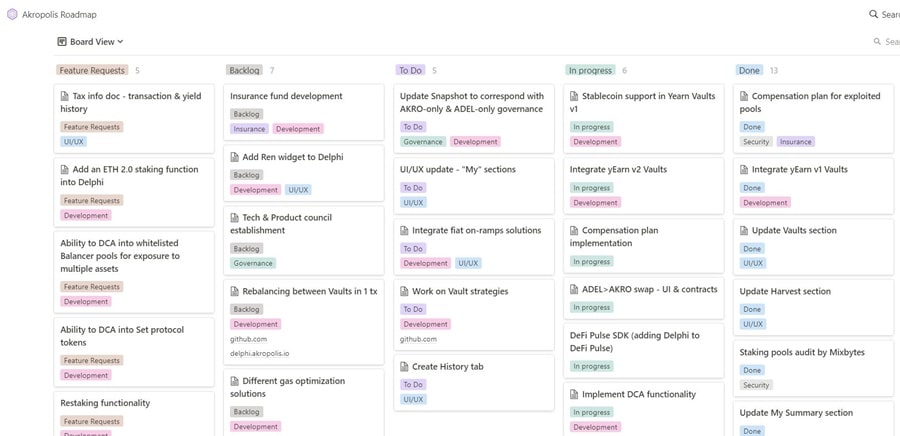
The roadmap and long-term plan for Akropolis post-merger. Image via Akropolis Roadmap.
This plan is based on a narrower developmental focus that will be on synthetic high-yield accounts and a vastly superior user interface and experience. Heading into 2021 the team at Akropolis have announced the following decisions:
- Narrowed down product focus: AkropolisOS and Sparta to be deprecated and moved into the Open Source development resources section for simpler, streamlined product offering;
- New vaults: Akropolis adopts the code of Yearn v2 vaults and its users become eligible to earn Pickle through the forthcoming Pickle Gauge, and leveraged through the forthcoming Cream v2 lending protocol;
- New strategies: The Akropolis contributors will write strategies for the new vaults and earn performance fees;
- New yield-generating products: Currently under development by the Akropolis team, will draw on the expertise and contributions of the yEarn team for the benefit of the entire ecosystem;
- New institutional app: Akropolis to become the exclusive institutional front-end to the combined Yearn & Akropolis yield-generating product suite, and will be contributing their strengths to the broader yEarn ecosystem.
As of February 2021 the Yearn v1 vaults are already implemented and the team is working on the Yearn v2 vaults. Also in the works is a fiat onramp and support for stablecoins. Another change being made is that the ADEL token used in the Delphi pool is largely being merged with the primary native AKRO token.
ADEL to AKRO Swap
Following the merger with Yearn Finance and the decision to narrow the focus of Akropolis the community began questioning whether it made sense to continue using the ADEL token or if it should be merged with the AKRO token.
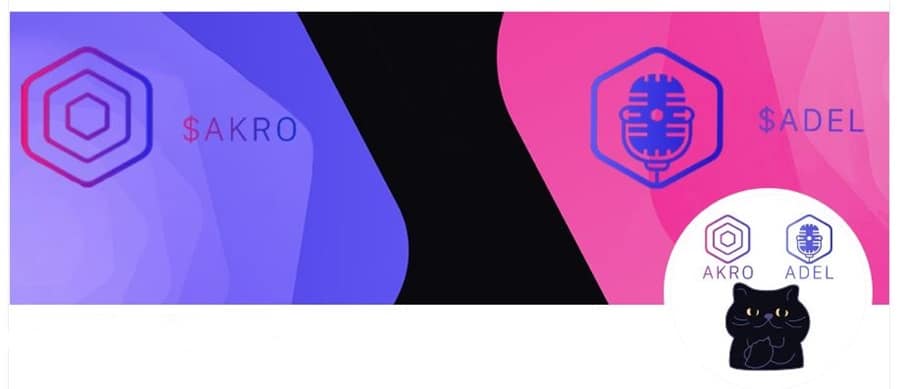
Users can voluntarily convert their ADEL to AKRO. Image via Twitter.
This line of questioning came about based on the history and utility of the ADEL token. When it was initially launched the plan was to distribute it to Delphi users as a way to incentivize governance at a time when AKRO was highly concentrated on CEXs. The premise was to use Delphi to earn ADEL, not to buy it on an exchange.
ADEL was never meant to be a speculative token. It was created as a utility token with its main purpose being the governance and development of Delphi.
Despite the comments from the Akropolis team ADEL was bought on the open market anyway, and the ADEL and AKRO holders separated into two distinct groups, each with their own agendas that were often at odds with the long-term vision for the development of Akropolis.
Now that the merger with yEarn is complete and the product focus of Akropolis will be narrowed there is no longer a relevant value proposition between ADEL and AKRO. Instead having two tokens is little more than a distraction to the team.
Bring value to AKRO by bringing the community together whilst not affecting AKRO by significant dilution, and allowing the team to quickly move forward and focus on yEarn merge, integration and development
In order to decrease the complexity of the tokenomics of Akropolis and to provide native token holders with enhanced value, the decision was made to separate the AKRO and ADEL products, and to make an offer to swap ADEL for AKRO on a voluntary basis.
This offer was made and anyone who accepts will receive a defined amount of ADEL to AKRO based on what’s available from the Treasury. The swap ratio was not dependant on the price of either token, and the offer allows for vested ADEL rewards to be exchanged for vested AKRO.
ADEL to AKRO Swap Details
- Swap rate: 1:15 (1 ADEL = 15 AKRO). The team will carve out 215M AKRO or ~5.4% of the Total Token Supply for the swap. Swap rate and the total AKRO amount is a function how much the team can allocate from the Foundation net of existing commitments.
- Swap duration: March 1 through May 1 (2 months).
- Vesting term: 24 months (2 years).
More details regarding the swap process can be found here.
Post-merger AKRO Tokenomics
AKRO now stands to accrue a Total Value Locked (TVL) referral fee on any funds that enter the yEarn vaults or pools through any Akropolis user interface. At the same time the yEarn team will focus on becoming a provider of vaults as a service (VaaS), primarily for institutional clients.
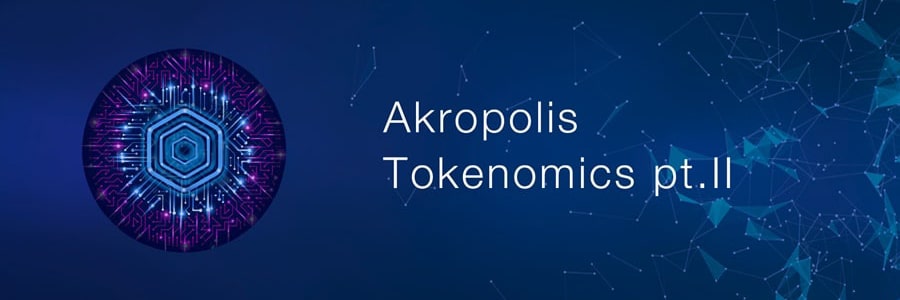
The new tokenomics for AKRO. Image via Medium.
While yEarn focuses on the development of VaaS the Akropolis team can leverage their own strengths with a focus on the business development and regulatory issues of the combined projects. At the same time Akropolis will benefit from the standardized tech stack, unified security processes, and the wider yEarn ecosystem.
AKRO holders continue to receive revenue share from the fees generated by the Akropolis yield-generating products. In addition, there are new yield generating products in research that will represent a separate product offering outside of the vault space.
AKRO will continue to act as a governance token for the protocol parameters below:
- Product features and integrations;
- Fees;
- Propose new Vault strategy;
- Propose Vault strategy selection/creation framework.
AKRO Token
The AKRO token underwent a private sale in 2018 where tokens were sold for $0.014 each, and then a public IEO on Huobi Global in July 2019 where tokens were sold for just $0.005 each. Either way it’s been a good investment as the AKRO token is currently worth $0.05125 in mid-February 2021.
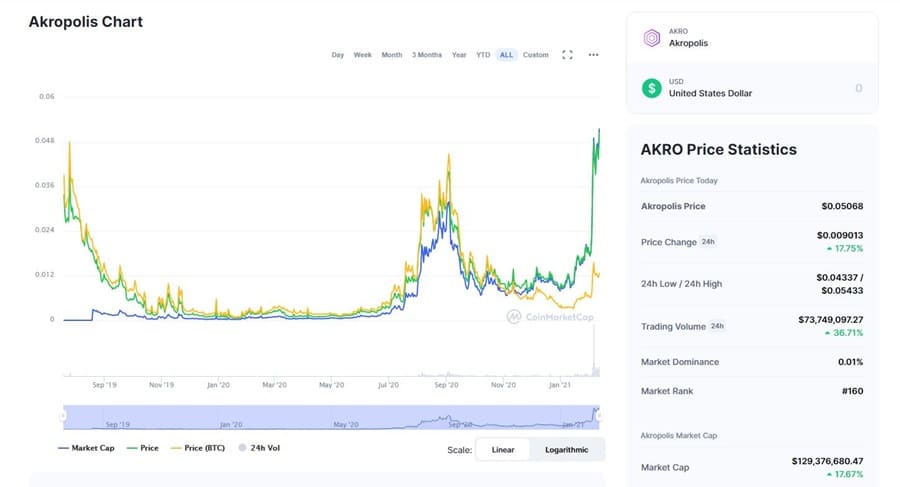
The short price history of the AKRO token. Image via Coinmarketcap.com
In looking at the chart above you’ll notice a spike in September 2020, a small increase following the news of the collaboration with yEarn in November 2020, and then a massive spike higher in 2021. That spike has little to do with AKRO and much to do with the broader rally in cryptocurrencies in 2021.
It has resulted in an all-time high of $0.05843 being reached on February 5, 2021. Just a year earlier on January 20, 2020 the token was sitting at its all-time low of $0.0005343. If you had enough foresight to buy at that point you’d have seen a 100x return on your investment in just 1 year.
Conclusion
DAO governance in decentralized finance seems to be an excellent model for fixing many of the problems inherent in the centralized banking system we all are forced to use today. The DAO controlled capital pools created by Akropolis do seem to be capable of creating a fairer system by removing greedy middlemen and returning the power back to the people.
It’s unknown at this point how Akropolis will benefit most from the collaboration with the team at yEarn Finance. As it stands it appears that the development of vaults will remain the primary focus of the yEarn team, and that the acropolis team will provide business development and marketing support, while also benefitting from the fees generated by the vaults.
With many of the Akropolis projects becoming open source and fully community governed it will be interesting to see how they fare. As the only platform that allows undercollateralized loans, Sparta shouldn’t have any problem surviving. And the possibilities inherent in the AkropolisOS are far greater than simple community banking and savings. I believe there are many other use cases that could spring from AkropolisOS.
Akropolis is still in the very early stages of its development, and it’s impossible to say what it might become in 5, 10 or 20 years time. With a growing community and the early implementation of new dApps the project seems to be gaining a life of its own, which is of course necessary for a DAO project to flourish.
With so many possibilities inherent in the AkropolisOS it will be very interesting to see what products the community develops now that the project has been open-sourced.
Featured Image via Shutterstock
Disclaimer: These are the writer’s opinions and should not be considered investment advice. Readers should do their own research.
- &
- 2016
- 2019
- 2020
- 9
- access
- advice
- advisor
- advisory
- Agreement
- All
- Allowing
- Amazon
- analytics
- announced
- Announcement
- app
- Application
- arbitrage
- around
- asset
- asset management
- Automated
- Automation
- autonomous
- Banking
- BEST
- Bitcoin
- blockchain
- Blog
- board
- board member
- BRIDGE
- build
- business
- businesses
- buy
- capital
- cases
- ceo
- change
- chief
- Co-founder
- code
- collaboration
- comments
- Common
- community
- Companies
- company
- Compensation
- continue
- contract
- Creating
- credit
- crypto
- cryptocurrencies
- CTO
- curve
- DAI
- DAO
- dapp
- DApps
- data
- deal
- decentralized
- Decentralized Finance
- DeFi
- Design
- develop
- Developer
- developers
- Development
- Devs
- digital
- Digital Asset
- dilution
- Discount
- Dollar
- driven
- Early
- Economic
- ecosystem
- Ecosystems
- ethereum
- EU
- exchange
- Exclusive
- fair
- family
- farm
- farming
- Features
- Fees
- Fiat
- finance
- financial
- First
- Flash
- Focus
- form
- Forward
- founders
- Framework
- function
- fund
- funded
- funds
- future
- Global
- good
- governance
- graduate
- Group
- Grow
- Growing
- Growth
- hack
- hackathon
- hackers
- hacking
- hacks
- head
- High
- history
- How
- HTTPS
- Huobi
- Huobi Global
- Identity
- IEO
- image
- Including
- Income
- Increase
- incubator
- industrial
- Institutional
- insurance
- integration
- integrations
- interest
- investing
- investment
- Investments
- Investors
- involved
- issues
- IT
- join
- July
- jump
- lead
- learning
- Led
- lending
- Level
- Leverage
- Line
- Liquidity
- List
- Loans
- Long
- looked
- machine learning
- major
- management
- March
- Market
- Marketing
- Members
- Metrics
- million
- model
- modular
- months
- move
- net
- network
- networks
- news
- Notion
- offer
- offering
- Offers
- open
- open source
- operating
- operating system
- Operations
- Opinions
- order
- Other
- Oxford
- Pay
- pension
- pension fund
- People
- performance
- platform
- Platforms
- pool
- Pools
- Popular
- power
- price
- private
- Product
- Products
- Profit
- project
- projects
- public
- rally
- range
- readers
- Referral
- research
- Resources
- Results
- returns
- revenue
- review
- Rewards
- Risk
- risk assessment
- rolls
- rules
- sale
- sdk
- security
- sell
- sense
- Services
- set
- Share
- shared
- Short
- Simple
- Size
- small
- smart
- smart contract
- So
- Social
- Software
- sold
- solidity
- Solutions
- Space
- Spin
- spring
- Stablecoins
- Staking
- State
- Strategy
- supply
- support
- system
- Talent
- tech
- Technical
- The Vault
- time
- token
- tokenomics
- Tokens
- trade
- Traders
- Trading
- traditional banking
- Trust
- university
- University of Oxford
- UPS
- users
- utility
- Utility Token
- value
- Vault
- Virtual
- virtual machine
- vision
- Vote
- Voting
- Wallet
- WHO
- within
- works
- worth
- year
- years
- Yield













